Suppose a user-friendly salon app where clients can book appointments effortlessly, choose their favorite stylists in seconds, and enjoy a seamless experience. All can be possible through the right salon app design.
In today's digitalized era, a salon app isn’t just an add-on; it’s a game-changer for customer experience and business growth. But designing a salon app that’s both functional and visually appealing takes more than just a few fancy features.
From intuitive booking systems to sleek UI/UX elements, in this blog, we’ll walk through a complete guide to salon app design. It helps to attract users and keeps them engaged. Let’s dive in and create an app that truly stands out in the beauty industry.
Understanding Salon App Design
Developing a salon app is not simply creating a booking system in digital form. It's about designing a smooth experience that maximizes customer satisfaction and simplifies salon processes.
An intelligently planned salon app design will provide ease of navigation, simplicity in appointment scheduling, and stimulating features that keep clients returning time and again.
-
Before development, the purpose and must-have features of salon app must be defined. Whether appointment booking, client management, or customer interaction is the focus, the app must have online scheduling, real-time availability, stylist profiles, push notifications, and secure payments. Incorporating loyalty programs, personalized recommendations, and customer reviews adds to user engagement.
-
If you want to create a salon app, a clean, intuitive UI/UX is essential. A professional color palette, high-definition images, and easy navigation provide a seamless experience, with easy service booking. The booking process must enable clients to pick services, pick stylists, and book appointments easily.
-
Secure payment processing with various options, such as digital wallets and "pay later" functionalities, provides convenience. Loyalty rewards and membership benefits enhance customer retention.
-
Finally, ongoing testing and updates maintain the app's operational and competitive status. Partnering with the best mobile app development company can ensure an intuitive design and optimization of your salon app that is changing the beauty industry.
By reading this basic guide to the design of salon apps, you'll be able to develop a user-friendly, captivating, and empowering salon app to take your salon business to a new level.
But, here the question comes in: Why is good app design important for a salon app? Let's understand that in detail.
Importance of Good App Design in Salon App
A salon app is not merely an online booking tool; it's a representation of your brand and one of your most important interactions with your clients.
Effective salon app design ideas can have a positive effect on user experience, client retention, and business success. Here's why effective design benefits your salon app:
A] Improves User Experience (UX)
A well-crafted and user-friendly app allows customers to book appointments, find services, and pay easily. Customers will leave the app, and bookings will be lost if the app is slow or confusing.
You should create an app that emphasizes easy navigation, fast response, and a clean interface to enhance user interaction.
B] Builds Brand Trust & Loyalty
Your app is a representation of your business. A well-designed website that looks great, has excellent images, and has a theme that ties everything together establishes trust and supports branding.
The more customers trust and return to a salon that provides a professional and easy-to-use digital experience, the better.
C] Boosts Customer Retention & Engagement
The best salon apps don’t just facilitate bookings, they engage customers with personalized offers, reminders, and loyalty programs. The app should feature push notifications, scheduling suggestions, and discounts to bring repeat visits.
D] Reduces Booking Errors & No-Shows
Sophisticated and legible booking modules reduce opportunities for scheduling mistakes. Automated reminders and alerts save on no-shows and provide improved control of customer and staff time.
E] Drives Revenue & Business Growth
A salon app design idea is effective in making it easy for customers to book services, purchase products, and browse add-ons, leading to higher sales. The easier it is, the more customers are ready to spend on additional services.
In the current digital era, every business needs a salon app to make operations seamless, increase customer interaction, and improve profitability.
So, a well-designed salon app is not merely a tool, it is a business driver that enhances customer satisfaction, creates brand equity, and fuels business success.
Complete Process of Salon App Design
Designing a salon app needs a systematic process to make it look good, be easy to use, and function well. Whether you own a salon business or are a company seeking to enter the beauty sector, an organized salon app design process can produce a vibrant and lucrative application.
The following is a step-by-step guide to salon app design covering all the critical phases, from planning to post-launch support.
1. Set the Scope of Your Salon App
Before diving into how to design a salon app, it’s important to define its scope. Start by identifying your target audience, business goals, and the core functionalities that will make your app stand out.
A well-defined scope helps streamline the development process and ensures your app meets customer expectations.
-
Online appointment booking for seamless scheduling
-
Stylist profiles with customer reviews and portfolios
-
Secure payment gateway for hassle-free transactions
The clearer your vision at this point, the smoother the rest of the development process will go.
2. Conduct Market Analysis
A well-researched salon app design guide starts with analyzing the competition. Look at the most suitable salon apps and understand what makes them successful. Identify the gaps in existing apps and take inspiration from leading industry trends.
Here are some key aspects to consider in market analysis:
-
Competitor Research: Identify the strengths and weaknesses of existing salon apps to create a better alternative.
-
User Preferences: Gather insights on customer expectations, preferred features, and design elements.
-
Industry Trends: Stay updated with AI integration, AR try-ons, and voice-assisted booking features to stay ahead.
A good market analysis ensures your app stands out in a crowded beauty-tech space.
3. Create User Personas & Map Customer Journeys
A successful salon app UI design revolves around understanding your target users. Create user personas by segmenting your audience based on:
-
Age, profession, and spending habits
-
Preferences in salon services (haircare, skincare, makeup, etc.)
-
Booking behavior (walk-ins vs. online appointments)
Once the user personas are prepared, chart their journey within the app, from discovering the app to services booking. Finding friction points in their journey makes it easier to enhance the salon app interface design, providing a seamless and convenient experience.
4. Wireframing—Structuring the Salon App
Wireframing is the blueprint of your salon app design, where the basic structure and layout are planned. It defines how different elements will be arranged, ensuring a smooth user flow. Wireframing helps visualize:
-
How different screens are connected for seamless navigation.
-
Where each feature is placed to enhance user accessibility.
-
How users interact with buttons, menus, and booking options.
A well-structured wireframe acts as a guide for designers and developers, ensuring that the salon app interface design remains intuitive and functional.
5. Prototyping – Bringing the App to Life
Once the wireframe is finalized, the next step is prototyping, where the static designs become interactive. This step involves adding:
-
Animations and transitions to enhance the user experience.
-
Clickable elements that mimic real app interactions.
-
A testable model that stakeholders can review before development begins.
6. UI/UX Design – Creating a Stunning Visual Experience
A well-thought-out UI/UX design is the foundation of a great user experience. The salon app UI design should be:
-
Visually appealing, with a modern and elegant look
-
Easy to navigate, avoiding cluttered screens
-
Consistent with branding, using appropriate colors, fonts, and styles
An intuitive salon app interface design ensures that users can book appointments effortlessly. The goal is to make the app simple yet stylish, giving customers a premium feel while using the application.
7. Mobile App Development
Once the design is finalized, developers begin building the app. This involves choosing the right technology stack, whether it’s:
-
Native development (iOS/Android) for optimized performance
-
Cross-platform development for a broader reach
This stage focuses on making sure all features work efficiently. Special attention should be given to speed, security, and scalability to handle increasing users without affecting performance.
8. Testing for Performance & Usability
No application is perfect without thorough app testing. A well-tested application ensures that it works seamlessly on all devices and operating systems. Testing comprises:
-
Functional Testing – Verifying that all the features function as intended
-
Usability Testing – Confirming the application is easy to use
-
Security Testing – Safeguarding user information and transactions
Testing removes errors, debugs bugs, and improves performance. As some of the challenges of salon app development are slow loading and UI problems, this stage ensures the app provides a smooth experience before its release.
9. Deployment of the App
Once testing is complete, it's time to launch the app on platforms like the App Store and Google Play Store. A smooth launch strategy includes:
-
Pre-launch marketing to build excitement
-
Beta testing to gather user feedback.
-
User onboarding to guide first-time users
A strong launch strategy ensures that your app gets maximum visibility and downloads right from the start.
10. After-Launch Maintenance & Support Services
The job isn’t over after launching the app. App maintenance services are required to:
-
Fix bugs and glitches that arise post-launch
-
Update features based on user feedback
-
Improve security and app performance.
Regular updates keep your app competitive and relevant. Ignoring maintenance can result in bad reviews, app crashes, and loss of customers.
A well-structured salon app design is the key to creating an app that’s visually appealing, easy to use, and profitable. By following these tips for designing salon app, you can develop an app that delivers top-notch service, keeps customers engaged, and boosts revenue.
Popular Salon App Design for Inspiration
If you are seeking tips for designing salon app, the best place to begin is with the top-rated salon apps that have already gotten it right.
These apps feature clean interfaces, smooth booking experiences, and delightful user journeys.
Let's look at five top salon app designs to spark your project.
► Booksy-Personalized & Engaging
Booksy excels in personalized user experience with tailored recommendations based on past bookings.
The smooth UX/UI ensures effortless appointment management, making it an inspiration for the design of salon apps that focus on customer retention.
► StyleSeat-Sophisticated & Intuitive
StyleSeat separates itself with its amazing and stylish design. The application makes it easy to book, cancel, and pay for appointments with minimal taps.
Its clean navigation creates a standard for creating a salon app that is both stylish and efficient.
► Fresha-Professional & Minimalist
Fresha is a great example of an AI-driven salon app design, offering smart appointment scheduling and automated reminders.
If you’re working with an app development company, this app is a perfect reference for integrating automation into salon services.
► Mindbody-Holistic & Wellness-Focused
Mindbody consolidates wellness and salon services under one roof.
With a clean but streamlined design, it allows users to schedule spa therapies, yoga classes, and beauty treatments with ease.
The design of salon apps like this one gives an overall experience.
► Treatwell-Simple & Efficient
Treatwell's sleek and neat design facilitates seamless browsing of services, reading reviews, and scheduling appointments in the blink of an eye.
It's the ultimate blueprint for a salon app design that's both beautiful and functional.
These top apps illustrate how a salon app design can make a difference in user experience and business success.
What's the Cost to Design a Salon App?
Designing a salon app involves multiple steps, each with its own cost and timeline.
Below is an estimated breakdown of the salon app design process, including the cost and time required for each phase.
|
Designing Step |
Estimated Cost (USD) |
Duration |
|
Market Research & Analysis |
$1,500 – $5,000 |
1 – 2 weeks |
|
User Personas & Journey Mapping |
$2,000 – $6,000 |
1 – 2 weeks |
|
Wireframing & Prototyping |
$3,000 – $8,000 |
2 – 3 weeks |
|
UI/UX Design |
$5,000 – $15,000 |
3 – 5 weeks |
|
Mobile App Development |
$10,000 – $50,000 |
2 – 5 months |
|
Testing & Quality Assurance |
$3,000 – $10,000 |
2 – 4 weeks |
|
Deployment & Launch |
$1,500 – $5,000 |
1 – 2 weeks |
|
Maintenance & Updates |
$5,000+ (Annual) |
Ongoing |
The overall cost to build a salon app can range from $20,000 to $100,000, depending on the complexity, features, and in-house team.
Investing in a well-structured salon app design is essential for long-term success, ensuring seamless bookings, enhanced customer experience, and better business growth.
Future Tips and Trends for a Salon App Design
The world of salon app design is evolving rapidly, and staying ahead of the latest trends is crucial to creating a successful app.
Here are some salon app trends and tips to ensure your app remains competitive and innovative.
1. AI-Powered Personalization
AI recommendations play a crucial role in enhancing user experience and driving revenue for salon apps nowadays.
If you create an AI app, you can scan through customer preferences, propose personalized treatments, and recommend tailor-made offers.
This optimizes user interactions and increases reservations.
2. Flawless UI/UX Design
A beautiful salon app UI design with simple navigation is the secret to retaining users.
Prioritize salon app interface design that provides seamless appointment scheduling, convenient stylist portfolio access, and easy payments.
3. Virtual Try-On Features
Another future tip for a salon app is virtual makeovers with augmented reality (AR).
The clients can try out different hairstyles, hair colors, and makeup before making a booking. Including this feature can make your app unique.
4. Integrated Online Store
Most salon apps make money by incorporating e-commerce segments to generate more money.
Selling beauty products, hair care products, and skincare products directly through the app can be an added source of income.
5. Subscription & Loyalty Programs
One of the best salon app design concepts is to provide subscription plans or loyalty rewards. This fosters customer retention and long-term engagement.
By following these design tips for a salon app, you will be able to create a contemporary, feature-packed application that will dominate the beauty sector.
Be it focusing on AI-based personalization, an intuitive salon app UI design, or including e-commerce, following the latest trends is the key to success.
How JPLoft Can Help You in Developing a Salon App?
If you're searching for the best salon app development company to provide high-quality, user-friendly, and feature-rich salon apps, JPLoft is here. We have years of experience in app development and are familiar with the specific requirements of the beauty and wellness industry.
We specialize in designing salon apps that improve user engagement. Our apps combine seamless appointment booking, AI recommendations, secure payment integration, and real-time notifications to provide a premium and hassle-free experience for both salon owners and clients.
We not only make an app but also develop solutions that make your salon business shine.
Ready to create a salon app that drives your business? Contact us today, and let's make your dream a reality.
Final Wrap-Up
An efficient salon app has the potential to revolutionize the working of beauty parlors to an extent, easing the life of customers and salon owners alike. Right from the research and conceptualization phase to UI/UX design, development, and support, each stage is instrumental in delivering a bug-free and interactive user experience.
By integrating contemporary functionalities, keeping pace with the trends of the current industry, and listening to clients' requirements, you can design an app that sets you apart in the competitive beauty tech domain.
From arranging appointments and fostering customer loyalty to generating AI-driven recommendations, a perfectly designed app has the potential to be the determining factor for a salon business or not.
With the proper way and professional consultation, making your app idea happen is simpler. Therefore, if you're interested in creating a beauty service application, now's the ideal moment to make that next move and bring your thoughts to life.
FAQs
A salon app must have a simple UI, easy navigation, easy booking functionality, and a contemporary design for a smooth experience.
Focus on wireframing, prototyping, and usability testing to enable rapid loading, intuitive navigation, and AI-based recommendations.
Minimalist UI, AI-powered recommendations, voice search functionality, and AR-based virtual try-ons are among the latest salon app design trends. Present-day salon apps focus on personalization, seamless payments, and engaging interfaces to drive customer loyalty and happiness.
Highlight simple-to-use user interface, futuristic features like trying on hairstyles virtually, AI-based personalized recommendations, simple booking, and offers of the day to attract and engage customers.
Yes, there must be periodic updates, fixes, security patches, and the addition of new features to help support the app, improve user experience, and deliver hassle-free performance in the future.





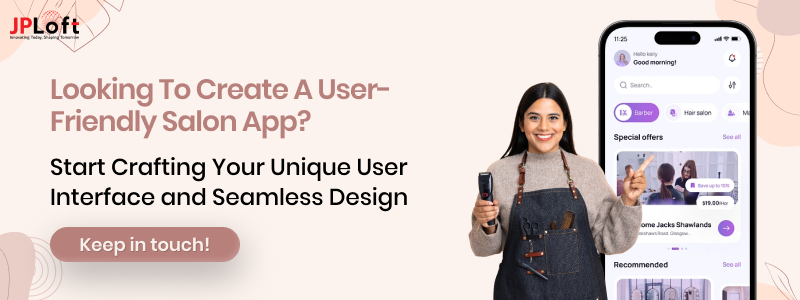
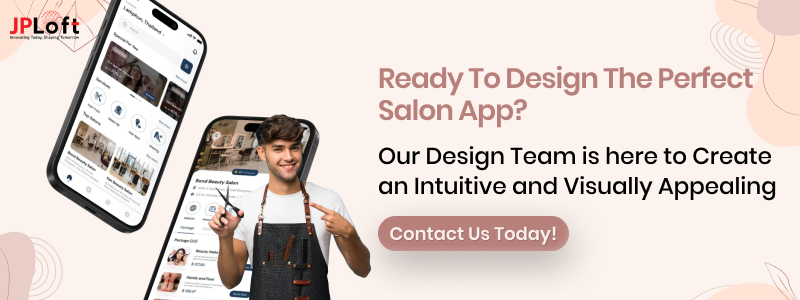

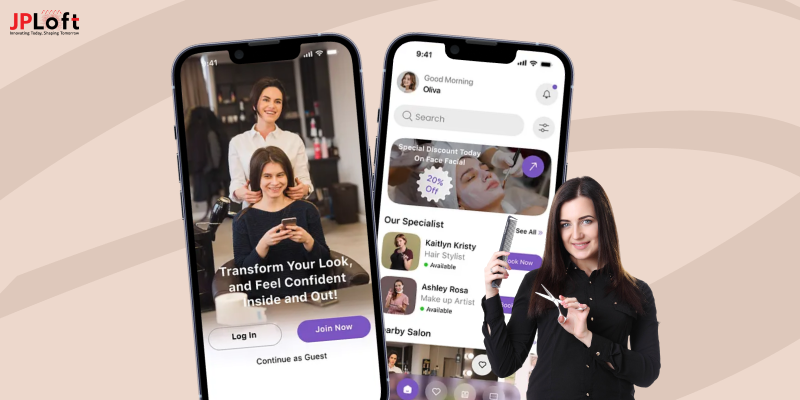
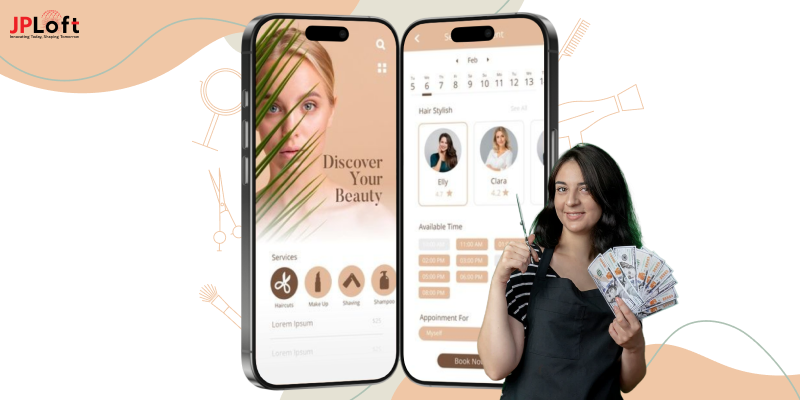
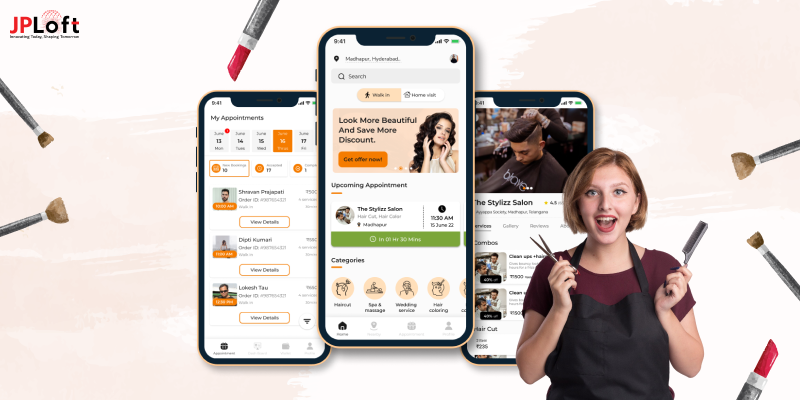



Share this blog